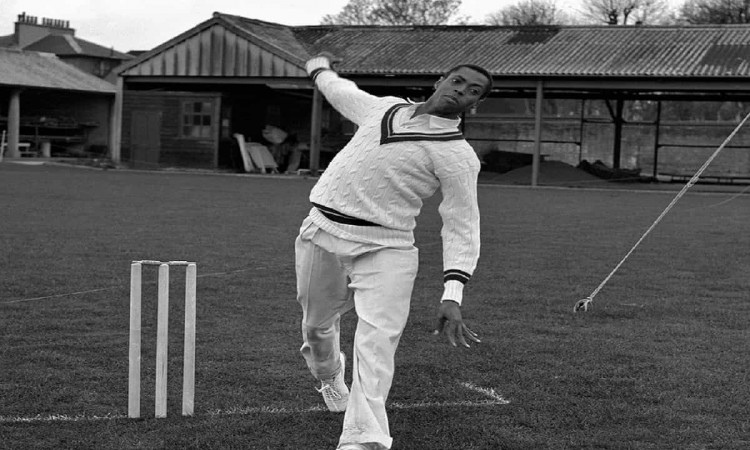Biography Of Lance Gibbs- The Greatest Spinner Of West Indies

With his lissom figure and unusually long fingers, Lance Gibbs allied pronounced spin and bounce to a fierce accuracy, and all from an unusual chest-on action. In his later years he added the arm-ball to his repertoire, and add into the equation almost unlimited stamina and determination (he had a permanently sore and often split spinning-finger), and his feat of being only the second bowler - and first spinner - to pass 300 wickets is understandable. He ended with 309 wickets in 79 Tests - including 18 five-fors - all the while conceding his runs at a staggering 1.99 per over.
Lancelot Richard Gibbs was born in Georgetown, Guyana, on September 29, 1934. He made his first-class debut at the age of 19 in February, 1954, against M. C. C. for British Guiana, as it was then. He took two wickets which cost him 126 runs. The only special significance of that far distant occasion was that those two victims had already made a distinguished mark in the game. They were Tom Graveney, caught in the deep for 231, and Denis Compton, bowled for a more modest 18. No one knew it then, but Gibbs had arrived.Yet strangely enough the bowler who was to reach the greatest heights as a master of off-spin began bowling leg-breaks.
Gibbs played a few more first-class games for British Guiana over the next few years, and some good performances (including 4/68 in the final of the Quadrangular Tournament against Barbados in 1956–57) gained him selection for the West Indies side to host Pakistan the following season. He made his debut in the second Test at Port-of-Spain, taking four wickets in the match, and retained his place for the rest of the five-match series, his first five-wicket haul in first-class cricket coming when he claimed 5/80 in the fourth Test at Bourda.
He went on the tour to India in 1957–58, but played in only one Test, in which he went wicketless. The tour of Pakistan that immediately followed was a little more fruitful, with eight wickets in three games. However, it was the 1960–61 tour of Australia that was to prove a turning point in Gibbs' international career. He played only in the last three Tests, but took 19 wickets at 20.78; eight at Sydney, five at Adelaide (including a hat-trick) and six at Melbourne.
The early 1960s were Gibbs' most productive period in Test cricket, and his greatest achievements came in the 1961–62 home series against India. Over the course of five Tests he picked up 24 wickets at just 20.41 apiece, including one of the game's greatest spells of bowling at Bridgetown, where he single-handedly reduced the Indians from 149/2 to 187 all out with eight wickets in 15.3 overs at a total cost of just six runs; Gibbs' final innings return of 8/38 was his best in a Test match.
In 1963 West Indies toured England, and Gibbs had another highly successful series, taking 26 wickets at 21.30 including 5/59 and 6/98 in a ten-wicket triumph at Manchester. Further successful series followed and in eight successive series, Gibbs topped the bowling charts in 1960–61 and 1968–69 tours to Australia. Gibbs never took fewer than 18 Test wickets and took five or more wickets in an innings on 12 occasions.
In 1973, at the age of almost 39, Gibbs made his One Day International debut against England at Leeds as part of the Prudential Trophy tournament, taking the wicket of England captain Mike Denness.
Gibbs' last Test matches were played on the tour of Australia in 1975–76. Although he played in all six Tests, and took 5/102 in the first innings of the first Test at Brisbane, his 16 wickets came at an average of over 40, the worst of his five series against these opponents. He passed the milestone of 300 Test victims at Perth by dismissing Gary Gilmour. His last Test match, and indeed his last appearance in senior cricket of any description, was at Melbourne, his 309th and final Test wicket being that – again – of Gilmour.
After his retirement from the game, Gibbs immigrated to the United States, but returned to prominence briefly in 1991 when he managed West Indies' tour to England.
Gibbs is the cousin of another great West Indies cricketer, Clive Lloyd, with whom he appeared for West Indies on a number of occasions.
Other Legends
Latest Cricket News
Cricket Special Today
-
- 02 Jan 2026 10:14
-
- 22 Dec 2025 12:30













